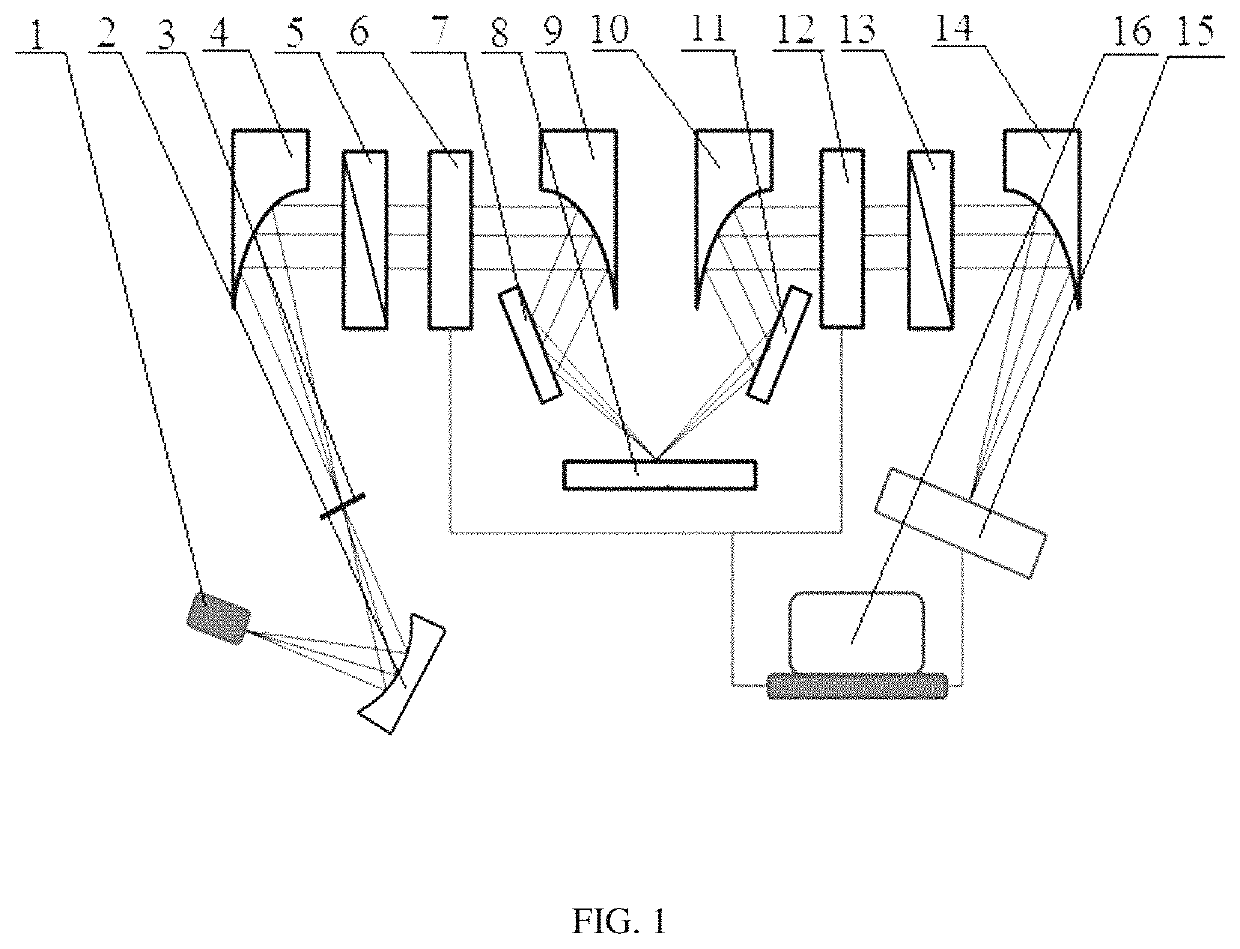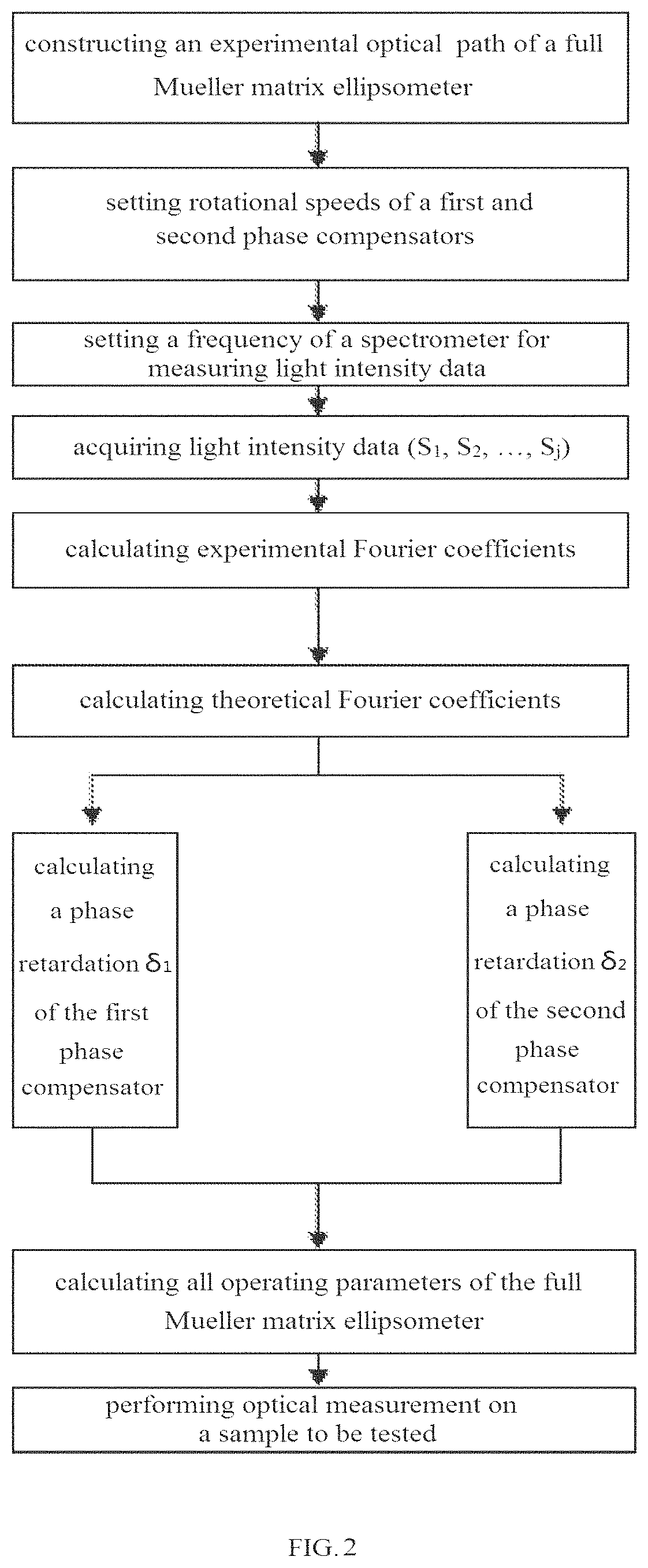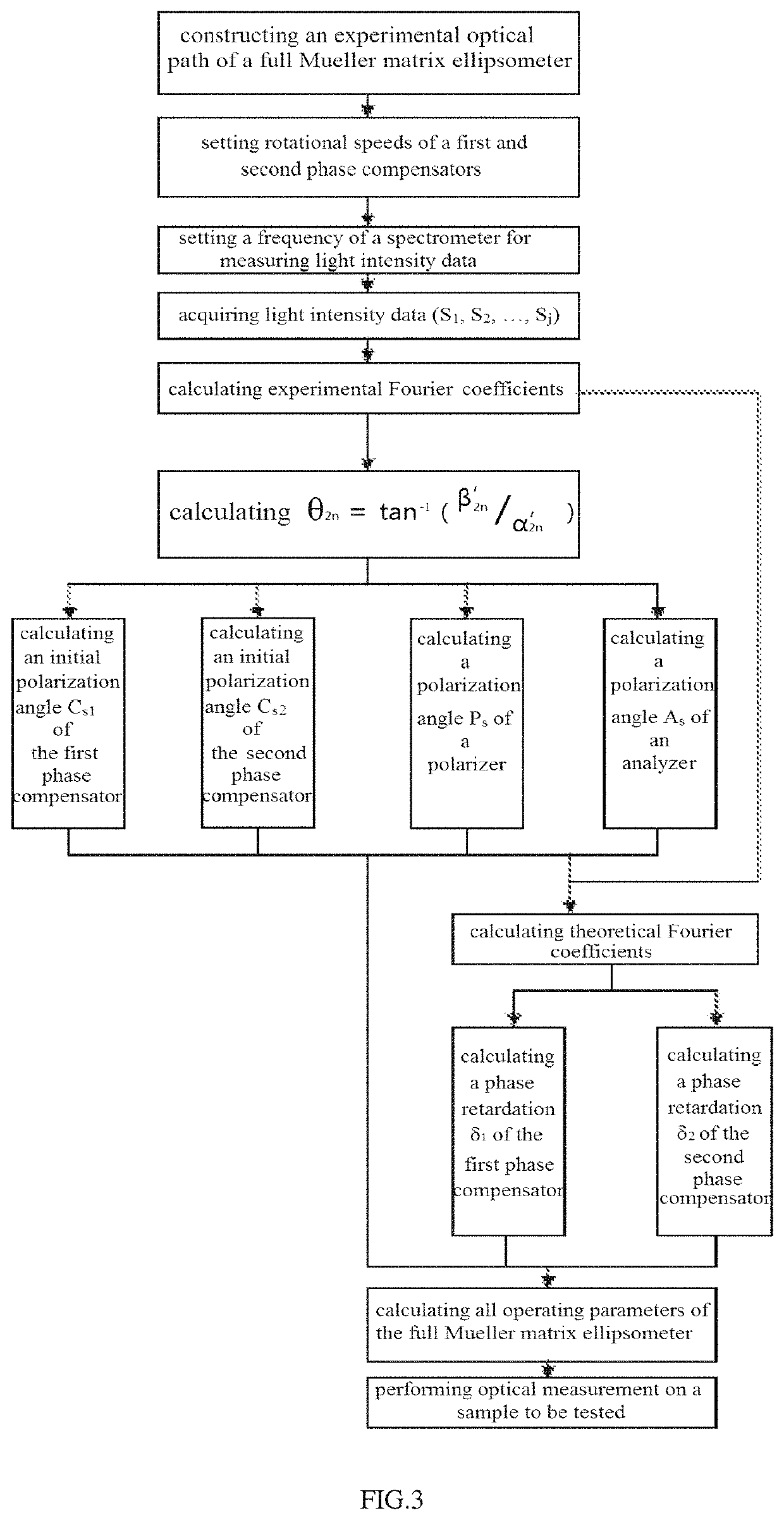Method for conducting optical measurement usingfull Mueller matrix ellipsometer
a mueller matrix and ellipsometer technology, applied in the field of optical measurement technology, can solve the problems of continuous increase of unknown variables to be measured, complex device structure, and limitations of ellipsometers, and achieve the effect of small error, more accurate parameters, and more accurate measurement results
- Summary
- Abstract
- Description
- Claims
- Application Information
AI Technical Summary
Benefits of technology
Problems solved by technology
Method used
Image
Examples
embodiment 1
[0028]A method for conducting optical measurement with a full Mueller matrix ellipsometer according to Embodiment 1 of the present invention may comprise the following steps:
[0029]step 1: referring to FIG. 1, constructing an experimental optical path of a full Mueller matrix ellipsometer. The experimental optical path may include a light source 1, an annular mirror 2, a pinhole 3, a first off-axis parabolic mirror 4, a polarizer 5, a first phase compensator 6, a first plane mirror 7, a sample stage 8, a second off-axis parabolic mirror 9, a third off-axis parabolic mirror 10, a second plane mirror 11, a second phase compensator 12, an analyzer 13, a fourth off-axis parabolic mirror 14, a spectrometer 15 and a terminal 16. An isotropic and uniform reference sample is carried on the sample stage 8. The experimental optical path of the full Mueller matrix ellipsometer, which can be self-calibrated through total regression, may have the following optical process:
Sout=MAR(A′)R(−C2)Mc2(δ2...
embodiment 2
[0076]Referring to FIG. 3, the difference between the total regression self-calibrated full Mueller matrix ellipsometer according to the embodiment 2 of the present invention and the total regression self-calibrated full Mueller matrix ellipsometer according to the embodiment 1 of the present invention lies in that: the total regression self-calibration method of the total regression self-calibrated full Mueller matrix ellipsometer according to the embodiment 2 of the present invention may further comprise the following steps:
[0077]obtaining respective θ2n based on respective experimental Fourier coefficients α′2n, β′2n, where θ2n is an intermediate parameter defined for the convenience of calculation;
[0078]obtaining an initial polarization angle Cs1 of a first phase compensator based on the respective θ2n;
[0079]obtaining an initial polarization angle Cs2 of a second phase compensator based on the respective θ2n;
[0080]obtaining a polarization angle Ps of a polarizer based on the res...
PUM
| Property | Measurement | Unit |
|---|---|---|
| optical measurement | aaaaa | aaaaa |
| optical path | aaaaa | aaaaa |
| rotational speeds | aaaaa | aaaaa |
Abstract
Description
Claims
Application Information
 Login to View More
Login to View More - R&D
- Intellectual Property
- Life Sciences
- Materials
- Tech Scout
- Unparalleled Data Quality
- Higher Quality Content
- 60% Fewer Hallucinations
Browse by: Latest US Patents, China's latest patents, Technical Efficacy Thesaurus, Application Domain, Technology Topic, Popular Technical Reports.
© 2025 PatSnap. All rights reserved.Legal|Privacy policy|Modern Slavery Act Transparency Statement|Sitemap|About US| Contact US: help@patsnap.com



